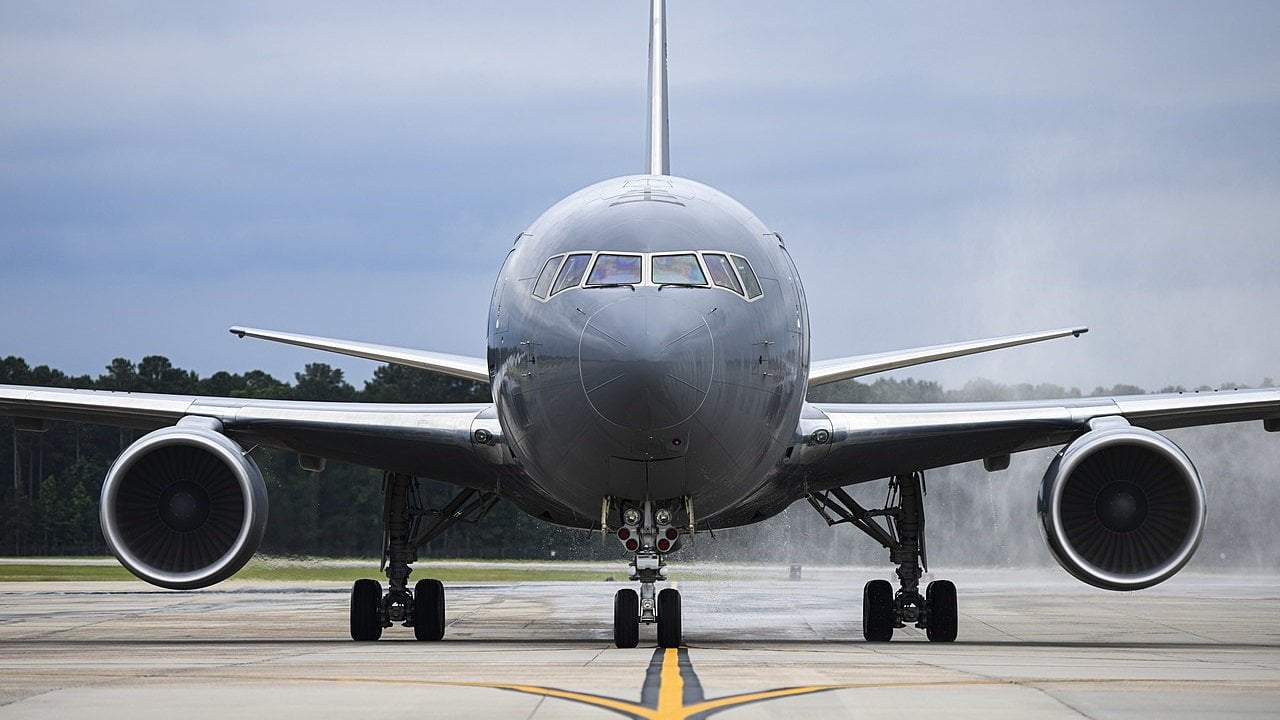Successful military initiatives have three common phases that work congruently toward a shared outcome: rigorous planning, sufficient resources, and strong execution. The United States Air Force has demonstrated all three in its acquisition of Boeing’s new air refueling aircraft, the KC-46 Pegasus.
What Makes the KC-46 Special
The achievements of the KC-46 Pegasus didn’t happen overnight. It took years of planning, development, and testing to deliver a refueling tanker so advanced that its technology will be able to adapt to new challenges while performing at the highest level and maintaining ease of operability for pilots and crews.
I served in the Air Force for nearly 30 years, and during that time I was an instructor pilot and squadron commander for the KC-135 Stratotanker, the predecessor of the KC-46 Pegasus. The Boeing KC-135 was tough, reliable, and achieved its mission over its decades of service. However, in the early 2000s, it became clear that the 1950s-era KC-135 would not be able to carry the Air Force into the next generation of aerial refueling. Planning soon began to develop a new tanker.
The formal request for proposal (RFP) released in January 2007 by the U.S. Air Force included nine primary key performance requirements: air refueling capability; fuel offload and range that at least matched that of the KC-135; compliant communication, navigation, surveillance and air traffic management equipment; airlift capability; ability to take on fuel while airborne; force protection measurements; survivability; ability to communicate battle space information in real time; and functionality as a multi-point refueling system for the U.S. Navy and Allied aircraft.
The KC-46 Pegasus met each requirement set by the Air Force, but capability wasn’t enough. It also needed to prove it could be sourced and maintained long-term.
According to a RAND Corporation report released in 2006, “purchasing new commercially-derived tankers was the most cost-effective means” to recapitalize the U.S. tanker fleet. In addition to cost, as the military variant of the commercial 767-200, the KC-46 includes a robust, fully-operational American supply chain that supports hundreds of supplier companies in nearly every state, tens of thousands of U.S. jobs, and billions in national economic impact. Spare parts and certified, experienced mechanics, engineers, and support staff are also readily available due to the strength of the commercial program.
The final piece of the acquisition puzzle is execution – can the aircraft successfully complete its mission?
The KC-46 air refueling receiver certifications include 22 aircraft, including the F-35 and the F-15 – the top U.S. and Allied fighters. The list of receivers also includes the Marine Corps V-22 Osprey. Gen. Mike Minihan, U.S. Air Force Mobility Command Chief approvedan Interim Capability Release last fall, allowing the KC-46 to be deployed anywhere in the world, adding that the Pegasus has “enormous capability” and he has “100% confidence in its ability.”
The next generation tanker successfully flew its first real-world mission last fall when it refueled two F-15E fighters in the Middle East during a U.S. Central Command mission. The results proved that the KC-46 is more than capable of fulfilling its core mission of in-flight refueling, as well as the ability to exchange data between different operational networks in real time.
Global conflicts are unpredictable and full of unknowns, but the approach to a successful defense strategy is concrete. Thoughtful and detailed planning, extensive resources, and smart execution will give the U.S. military an advantage in any combat situation. The U.S. Air Force used the same approach in its acquisition of the KC-46. Applying those criteria moving forward through the next phases of the tanker modernization effort will ensure a successful transition from the KC-135 to the formidable, technologically advanced KC-46 of the future.
Author Expertise and Biography
Glenn Hanbey served 27 years as a U.S. Air Force pilot and squadron commander on the KC-135 Stratotanker. After his service, he continued his career in business development for the KC-46 program at Boeing.

